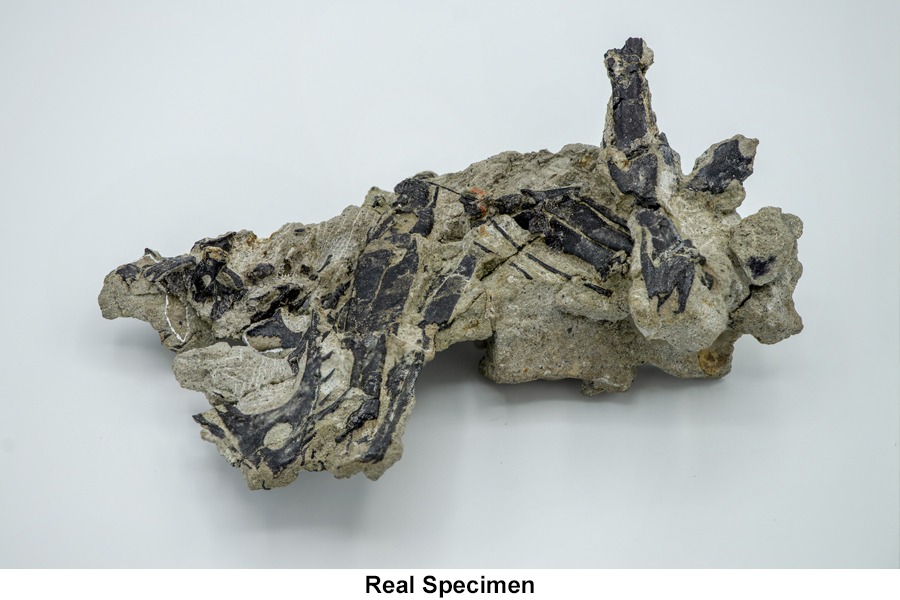Hesperornithoides (meaning “western bird form”; nicknamed “Lori”) is a troodontid dinosaur from the Late Jurassic Morrison Formation near Douglas, Wyoming, USA. The genus name represents the western region where it was found and the species name, miessleri, after a landowner in recognition of the access to the numerous sites and time spent helping the field crews from several museums during a 25-year period.
This access, then resulted from a long relationship with the landowner and many days and nights spent with his family. Also it should be noted that far too many volunteers have worked at the Douglas sites to list here. These were mostly students and teachers; but also visiting researchers, ranchers and interested museum visitors.
Officially, the specimens is referred to by the “dry” number WYDICE-DML-001. However, no one calls a fossil by a number; it can get boring. To personalize a fossil is easier and more fun. Museums rely on volunteers, and field and laboratory work crews will “immortalize” some people by giving a specimen a nickname, usually in appreciation for the time spent on projects. All specimens from the quarry sites in Douglas, (“Paul”, “Jim”, “Jan” and “Carol”) were named for children of the landowner, with the exception of “Lori”. The specimen is hence called “Lori” and used for familiarity and publicity purposes. It was so named after a volunteer, Lori Hockemeyer, who came out with the field crew and who was willing to spend her time at the digsite. Also, this description will refer to Lori as a “she”. We don’t know the sex of WYDICE-DML-001 (we can only guess), but it is easier to call Lori a “she” and refer to “her” world.
In 2001, a field crew from the Tate Museum of Casper College in Casper, Wyoming collected the fossil of “Lori” in the sandy shale 10 cm above the Supersaurus, “Jimbo” Quarry. The specimen was found in a foot trail area above the exposed quarry, and was exposed to foot traffic. Some damage was occurred including loss of several parts of the matrix “block” containing the bones. The bones of the supersaur are huge and can be distracting, but the hollow little leg bones of Lori were partially filled with the mineral barite, which is bright pink. A volunteer on the dig site, Bruce Theil, noticed a disarticulated claw on the back of one of the blocks of matrix. This led to a misidentification of the Lori specimen as a pterosaur. Later, careful preparation correctly identified her as a theropod and a relative to more familiar (and movie friendly) dinosaurs such as the velociraptor a bird relative if not a bird.
The specimen block consists of a partial skeleton with skull. It contains the rear skull and lower jaws, five neck vertebrae, the first back vertebra, twelve tail vertebrae, a rib, chevrons, the left shoulder girdle, the right humerus, the left arm, a thighbone piece, and the left and right lower legs minus the right toes. The skeleton is partially articulated so a person can follow and connect the body parts easily, however, as she is so small, really good graphic images of Lori are handy. Growth wise, the body represents a subadult or adult individual because all of the bones (such as vertebrae) that could be fused in life were.
The animal was about 89 cm in length (35inches?) are about the size of a turkey-ish.
As mentioned, Lori was found in a layer of the middle Morrison Formation. More familiar dinosaurs come from this same formations preserved paleoenvironment. Some of these other familiar dinosaurs at the WDC are Allosaurus, Stegosaurus and Diplodocus. Also found in the Douglas digsite, the one that started it all, is a Supersaurus named “Jimbo” the biggest dinosaur in Wyoming, so big it spans the length of the WDC museum.
Jimbo was buried in matrix (shale surrounding the bones) in what might be called a wet landslide. Mixed into the mud at the time were bits of plants. Lori was buried slightly above the Jimbo layer in a cleaner sandy shale matrix. Though these two animals were found close together, the matrix surrounding the bones was different enough (mud and plants, sandy shale) to make it two separate quarries.
Though somewhat limited, there are enough of Lori’s bones to make her at present unique. Her specific body elements of skull, teeth and limb proportions have been debated for almost 15 years and place her among the maniraptorans. Features of the teeth and skull further place her in the Troodontidae…for now. Future studies on little dinosaurs of this nature and the hope that more specimens will be found to round out the description suggest any placement of Lori will be fluid.
Surrounded in our museum by dinosaurs such as Allosaurus, of which there are many in the world, Microraptors, common in China, and the famous Archeoptyryx (12 known), Lori is literally one of a kind. We urge other collectors to go out there and find more, (though not too soon).


